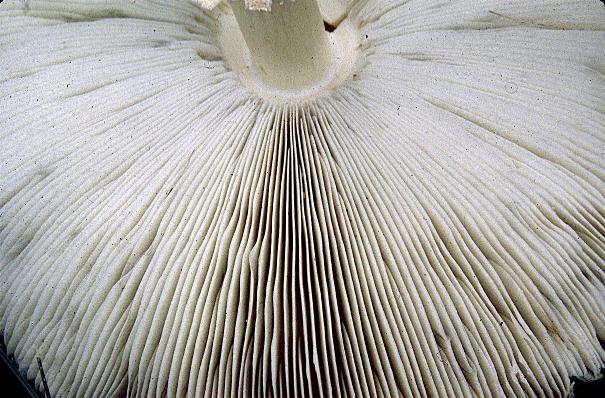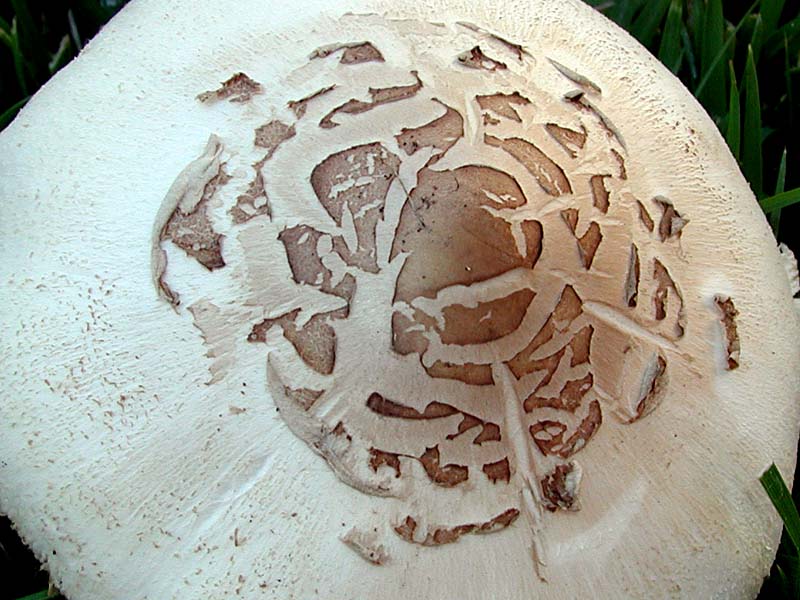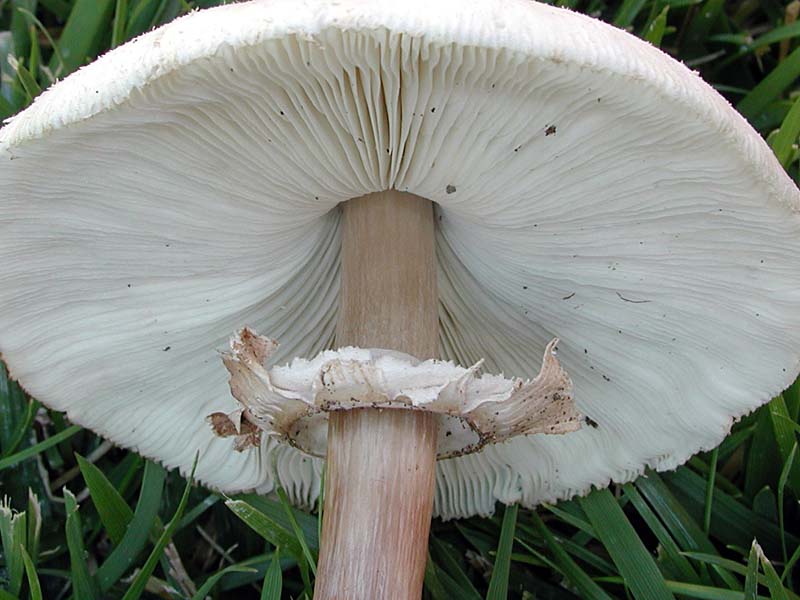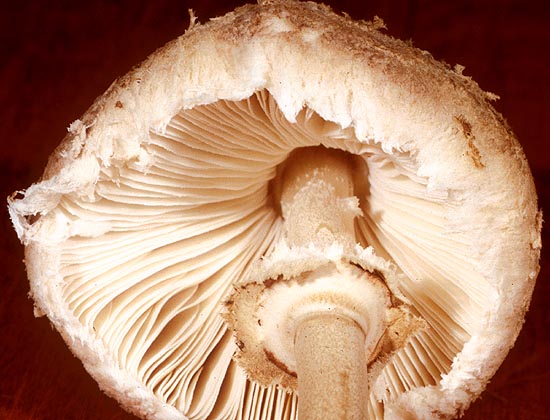Identifying Chlorophyllum molybdites
Technical Description:
Chlorophyllum molybdites have a range of what they look like
physically. This can make it hard to identify. Other mushrooms make
look very similar because they all can be varied by looks. This is
why you should always consult a mycologist before trying to identify
a mushroom on your own. A common description of the mushroom is having a large cap that
is scaly, has gills and green spots. Also, they are often found in a
fairy ring formation. The cap typically ranges from 7-30cm across
and is egg-shaped. The majority
are white with some brown/cinnamon colored
scales.

They can also be a greenish color with some bruising turning yellow
to brownish. The cap of the mushroom is typically round and becomes
flat over time. In the center of the mushroom it often will have
patches of various colors: whitish, pinkish, or cream-colored. The
base of the stalk slowly widens (1/4 to 1 inch). The upper stalk
will have a ring around it. The total length of the stalk ranges
from 3-10 inches. The gills on the
underside of the mushroom are packed in closely together and are
typically white, gray-green, or darker.
Macrolepiota procera, more commonly known as Parasol, looks
very similar but has more of a tall, thinner,
more scaly stalk. This
explains why Chlorophyllum molybdites is often called false parasol.
This mushroom is often mistaken for the edible ones because during
their spore stage in their life they look white like other
fungi. During its gametophyte stage it appears green; it just may
take a while for it to develop into this stage of its life.
Below you can see how these mushrooms do look
similar especially to the untrained eye!
Similar looking Macrolepiota procera Close up of young white C. molybdites
Remember: When in doubt, throw it out!


